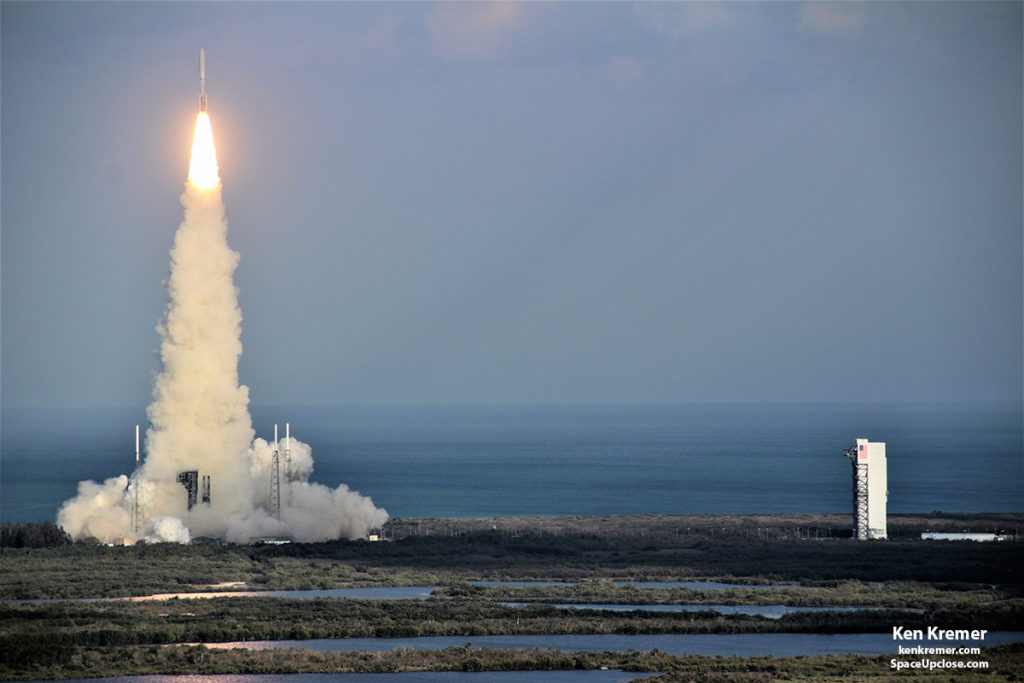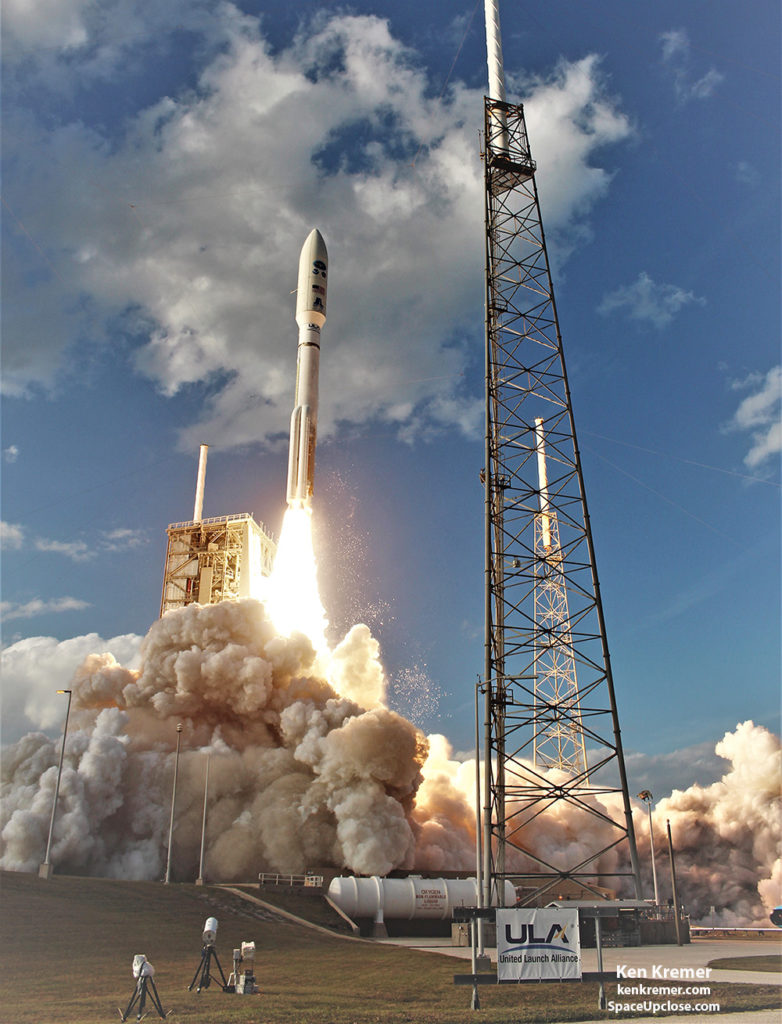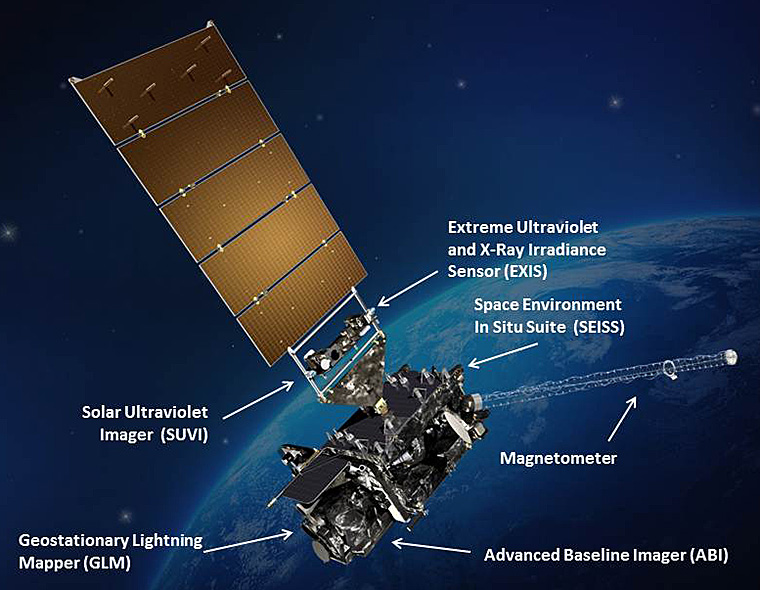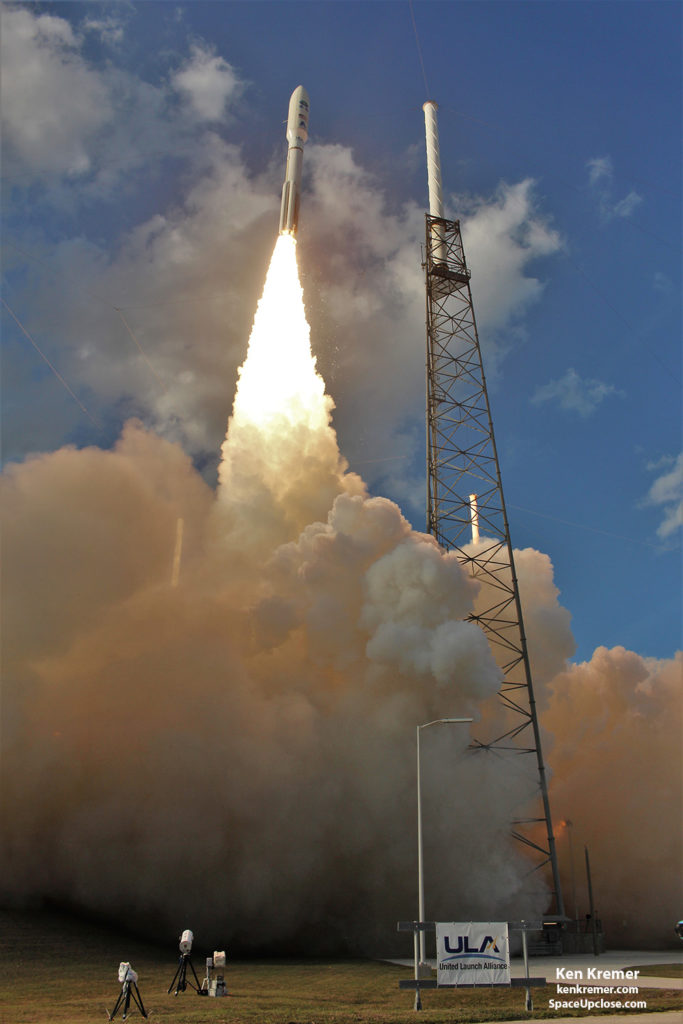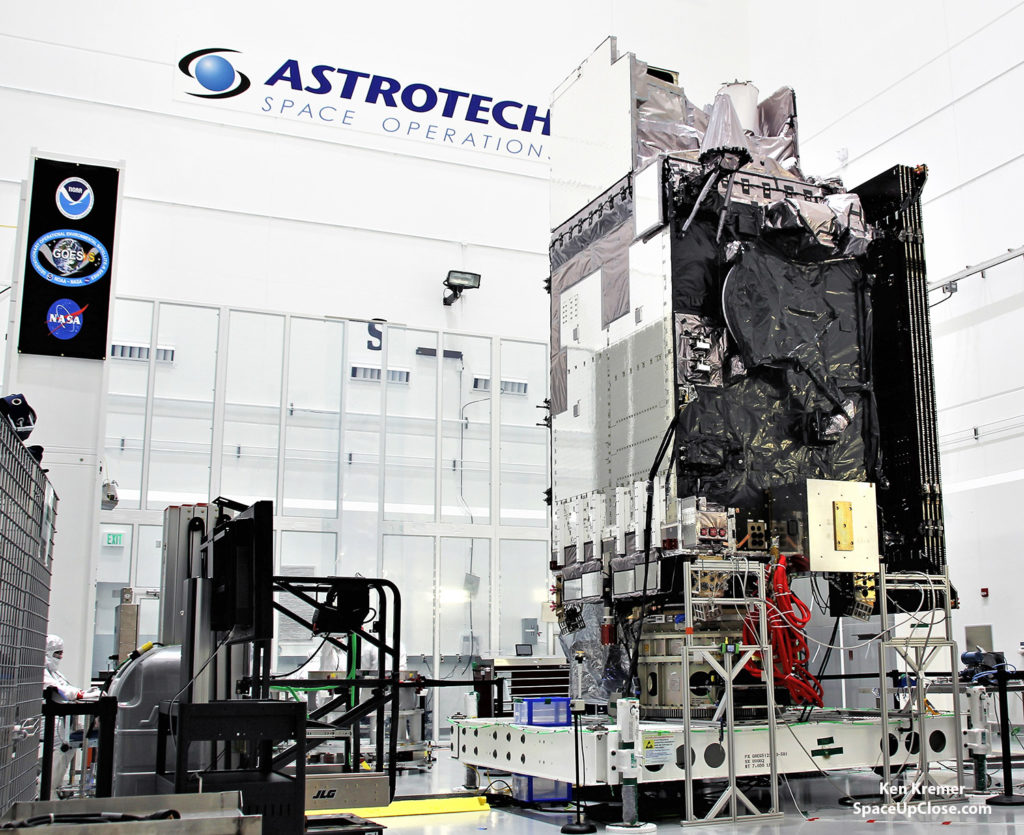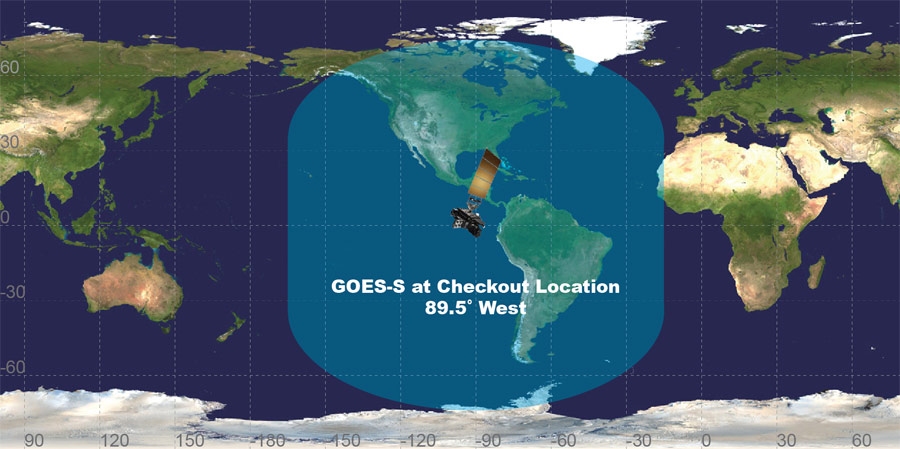 |
|
GOES-S view of Earth from its checkout location. Credit: NOAA
|
CENTER, FL – Less than 2 weeks after the
dinnertime blastoff of the GOES-S weather observatory put on a stunningly
delicious launch display from the Florida Space Coast on March 1, 2018, the revolutionary
satellite that will track extreme weather in near real time reached geostationary
orbit and was renamed as GOES-17.
engine burn, placing the satellite in geostationary orbit 22,236 miles away,” NOAA
announced in a statement.
is now GOES-17!”
weather forecasting in the Western Hemisphere orbiting some 22,200 mi (35800 km) above Earth where it
will operate for the remainder of its planned 15 year lifetime.
The
5.5 ton school bus sized probe will provide vastly improved
forecasts and warnings on weather, wildfires, tornadoes and cyclones for
California and the western United States all the way out to Hawaii and Guam in
ways that will positively impact the lives of everyday people as well as save
lives by helping pinpoint outbreaks of severe weather in near real time.
Satellite-S (GOES-S) lifted off on a United Launch Alliance (ULA) Atlas V
rocket from seaside Space Launch Complex 41 at Cape Canaveral Air Force Station
in Florida at 5:02 p.m. EST
on March 1, 2018.
in geostationary orbit, the next steps are to complete the deployment of the
solar array and solar pointing platform
and maneuver the satellite to its checkout position at 89.5
degrees West longitude.
six-month checkout of its suite of six state-of-the-art science observing instruments and space
craft systems will commence on March 26.
says the first images are expected in mid-May.
location at 137 degrees West longitude in late 2018 and become NOAA’s new GOES
West observatory – thereby replacing the current
legacy satellite.
will complete NOAA’s constellation of two next-generation geostationary
satellites for the Western Hemisphere.
the first in the series of US next-gen weather observatories and recently became
operational as NOAA’s new GOES-East observatory at 75 degrees West longitude.
on weather and environmental hazards from the west coast of Africa all the way
to New Zealand.
 |
|
Image shows the view of Earth from the
GOES West operational position. Credit: NOAA/CIMSS |
manages the GOES-R Series program through an integrated NOAA/NASA office at
NASA’s Goddard Space Flight Center in Greenbelt, Maryland.
GOES-R/GOES-16 were built by prime contractor Lockheed Martin Space Systems,
Littleton, Colorado.
GOES-17 will deliver
a quantum leap in weather forecasting for the western United States just as
GOES-R – the first satellite in the new series – is now doing for the eastern
United Stated since it only recently became operational in December 2017.
and more detailed data in near real-time to track storm systems, lightning,
wildfires, coastal fog, and other hazards that affect the western U.S., Hawaii
and Alaska.
system program director at NOAA told Space UpClose during an
interview at KSC. “It will give us the equivalent perspective for the western
US that we now have for the eastern US using the six onboard instruments namely
ABI and GLM, SUVI, EXIS, SEIS and the magnetometer.”
GOES-R series of America’s most powerful and most advanced next generation geostationary weather observation
satellites. It is designed to last for a
15 year orbital lifetime and will deliver a ‘quantum leap’ in weather
forecasting.
sister satellite GOES-R which was successfully launched by a ULA Atlas V on Nov. 19, 2016.
the GOES-R series consists of a quartet of four
identical satellites – comprising GOES-R, GOES-S, GOES-T and GOES-U – manufactured at an overall cost of about $11 Billion. This will keep the GOES satellite system operational through 2036.
state-of-the-art
science instrument suite includes the Advanced Baseline Imager (ABI), Geostationary Lightning Mapper (GLM),
Solar Ultraviolet Imager (SUVI), Extreme Ultraviolet and X-Ray Irradiance
Sensors (EXIS), Space Environment In-Situ Suite (SEISS), and the Magnetometer
(MAG).
primary instrument and will collect 3
times more spectral data with 4 times greater resolution and scans 5 times
faster than ever before – via the primary Advanced Baseline Imager (ABI)
instrument – compared to the current GOES satellites.
channels in the visible, near infrared and infrared channels compared to 5 for the
legacy GOES satellites.
with 4x better spatial resolution, 3 x as many frequencies or spectral bands,
and we receive images 5 x faster,” Walsh said already with GOES-R/GOES-16
compared to the legacy GOES East/West satellite imager technologies “which were
created and developed in the mid-1980s.”
current imager on orbit today takes 26 minutes. With GOES-R now we can do the
same thing in 5 minutes.”
now weather forecasting imagery.”
May, said Walsh. “First we need to raise the temperature of the instruments
once on orbit. We will outgas them for several weeks.”
GOES-S/GOES 17 and GOES-R/GOES 16.”
equatorial belt to obtain different views.
Together they will be able to image the entire US and regions further
out beyond to the east and west to provide coverage of the entire Western
Hemisphere.
have from GOES 16.”
the eastern pacific. So at that time we will be able to see the entire United
States out to Hawaii, Alaska and even almost to New Zealand.”
gives the full Eastern seaboard and CONUS [continental US] coverage,” Walsh
explained.
areas of the Earth viewed by GOES East and GOES West from their vantage point
22,236 miles above the equator. NOAA maintains a two-satellite Geostationary
Operational Environmental Satellite (GOES) constellation to watch over the
Western Hemisphere. The satellites circle the Earth in geosynchronous orbit,
which means they orbit the Earth’s equatorial plane at a speed matching the
Earth’s rotation. This allows them to stay in a fixed position in the sky,
remaining stationary with respect to a point on the ground. Credit: NOAA/NASA
The gigantic school bus sized satellite measures 6.1 m x 5.6 m x 3.9 m (20.0 ft x 18.4 ft x
12.8 ft) with a three-axis
stabilized spacecraft bus.
(11,446 lbs) at launch.
GOES-East Full Disk GeoColor satellite imagery GIF,
March 14, 2018:
ULA, Boeing, Lockheed Martin, Orbital ATK and more space and mission
reports direct from the Kennedy Space Center and Cape Canaveral Air Force
Station, Florida.
Earth and Planetary science and human spaceflight news: www.kenkremer.com –www.spaceupclose.com –
twitter @ken_kremer – ken
at kenkremer.com


